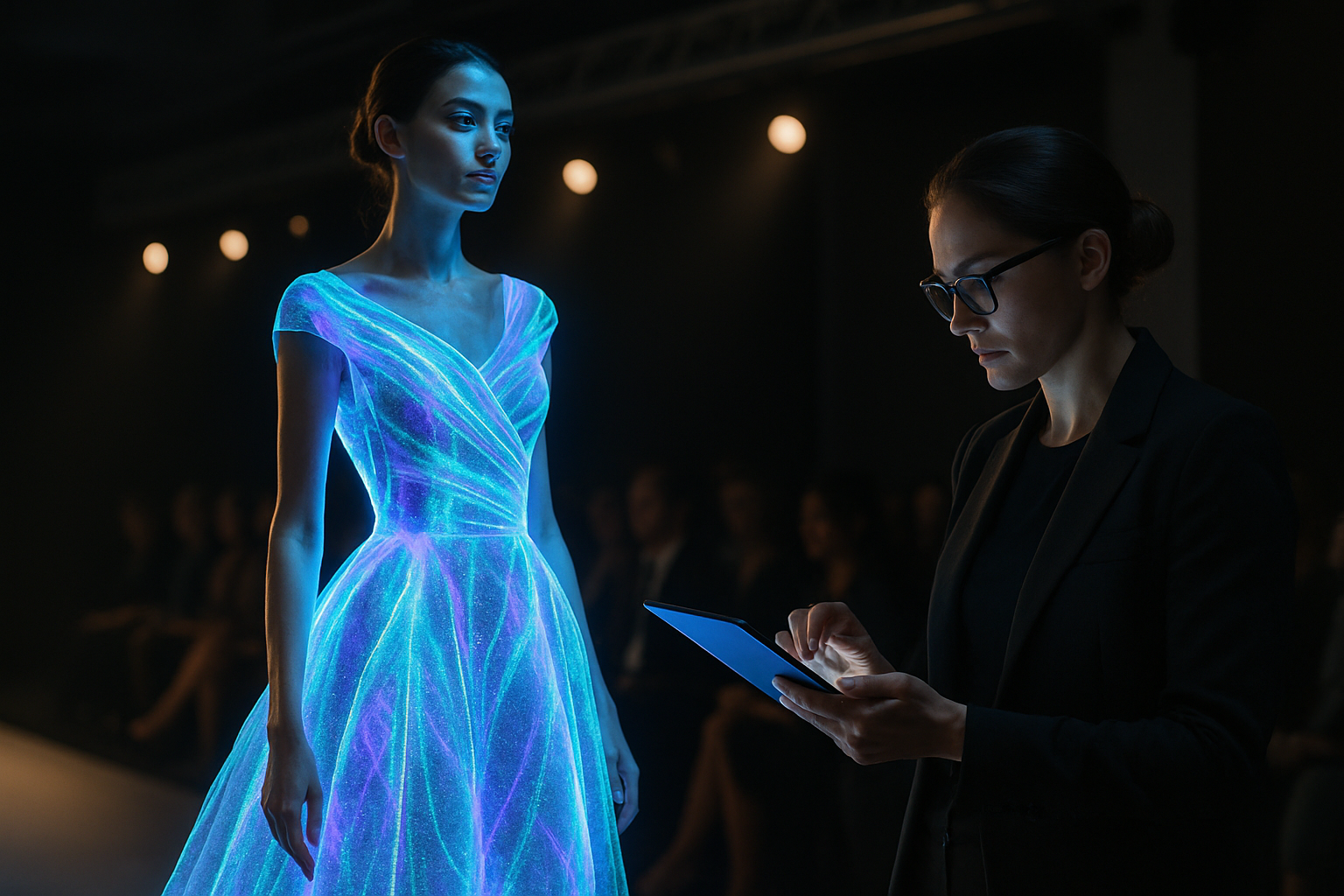Holographic Haute Couture: Fashion's Dimensional Frontier
In the ever-evolving world of fashion, a groundbreaking trend is taking center stage, blurring the lines between reality and digital artistry. Holographic haute couture, a fusion of cutting-edge technology and high fashion, is revolutionizing runways and redefining the boundaries of sartorial expression. This innovative approach to design is not just changing how we perceive clothing; it's reshaping the entire landscape of fashion creation, presentation, and consumption.

Technological Foundations
At the heart of holographic fashion lies a complex interplay of light, lasers, and sophisticated software. Modern holographic displays utilize a combination of high-resolution projectors, specialized screens, and advanced algorithms to create the illusion of three-dimensional garments. These systems can project intricate designs that appear to have depth, movement, and texture, all without the need for physical fabric.
Redefining the Runway Experience
Holographic fashion shows have emerged as a game-changer in the industry. Designers can now present collections that defy the laws of physics, with garments that transform in real-time, change colors instantaneously, or even disintegrate into particles before reassembling. This dynamic presentation style not only captivates audiences but also opens up new realms of creative possibility for designers.
Sustainability and Digital Wardrobes
One of the most significant impacts of holographic fashion is its potential to address sustainability concerns in the industry. By creating digital-only garments, designers can reduce waste associated with physical production. Consumers can purchase and wear these digital designs in virtual spaces or augmented reality environments, satisfying their desire for novelty without the environmental cost of fast fashion.
Challenges and Controversies
Despite its potential, holographic fashion faces several hurdles. Critics argue that it may lead to a disconnect between fashion and tactile experience, potentially devaluing craftsmanship. There are also concerns about accessibility, as the technology required for holographic displays remains expensive and not widely available to the average consumer.
The Future of Holographic Couture
As technology continues to advance, the possibilities for holographic fashion seem limitless. Industry experts predict a future where holographic garments could be customized in real-time, adapting to the wearer’s mood or environment. Some envision a merging of physical and digital fashion, where holographic elements enhance traditional garments, creating hybrid designs that blur the line between reality and digital fantasy.
Cross-Industry Collaborations
The rise of holographic fashion has sparked collaborations between fashion houses and tech companies, leading to innovations that extend beyond clothing. From holographic accessories to entire virtual fashion ecosystems, these partnerships are pushing the boundaries of what’s possible in both fashion and technology.
Educational Impact
Fashion schools are beginning to incorporate holographic design into their curricula, preparing the next generation of designers for a future where digital and physical fashion coexist. This shift is not only changing how design is taught but also opening up new career paths in the intersection of fashion and technology.
Consumer Adoption and Market Trends
While holographic fashion remains largely in the realm of high-end couture and experimental showcases, consumer interest is growing. Early adopters are embracing digital fashion items for use in social media and virtual environments. Market analysts predict a significant increase in demand for holographic and digital fashion products over the next decade.
Ethical Considerations
As holographic fashion gains traction, it raises important ethical questions. Issues of digital ownership, copyright in virtual spaces, and the potential for deepfake fashion are emerging as key concerns that the industry must address. Stakeholders are calling for new regulatory frameworks to govern this nascent field and protect both creators and consumers.
In conclusion, holographic haute couture represents a fascinating convergence of art, technology, and fashion. As it continues to evolve, it promises to reshape not just how we dress, but how we perceive and interact with clothing in both physical and digital realms. The journey of holographic fashion is just beginning, and its full potential remains an exciting frontier for exploration and innovation in the years to come.





